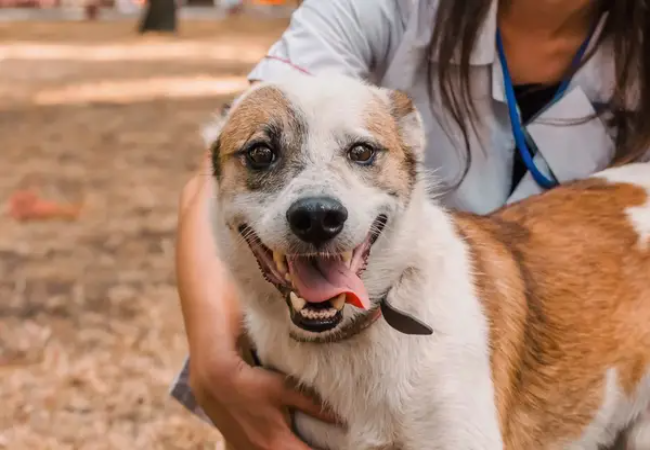Why Do Dogs Pant? 2025 Vet Insights on Cooling, Stress, Illness & What to Watch🐾

In this article
Why Do Dogs Pant? 2025 Vet Insights on Cooling, Stress, Illness & What to Watch🐾
By Dr. Duncan Houston BVSc
🌬️ What Is Panting?
Panting is a dog’s natural way of cooling off—since they lack sweat glands (aside from paw pads), they rapidly breathe through an open mouth to evaporate moisture and release heat. It also helps circulate oxygen when they’re excited, stressed, or in pain.
❇️ Normal Reasons Dogs Pant
- Cooling down: After exercise or in warm weather.
- Play & excitement: Happy panting—relaxed body, wagging tail.
- Heat regulation: Vital during high temperatures or sun exposure.
- Age-related changes: Older dogs pant more due to decreased efficiency, pain, or anxiety.
- Breed traits: Brachycephalic breeds like Pugs pant more due to airflow limitations.
⚠️ When Panting May Signal Concern
- Stress or anxiety: During storms, car rides, vet visits.
- Pain or discomfort: Injury, dental issues, arthritis.
- Medical conditions: Heart disease, lung issues, Cushing’s, anemia.
- Heatstroke: Emergency situation—excessive panting, drooling, red gums.
- Respiratory distress: Labored breathing, pacing, drooling—possible airway obstruction.
- Post-medication effects: Steroids (like prednisone) can induce panting.
🔍 What to Observe in Your Dog
- 🫁 Breathing type: is it open-mouthed, shallow, or labored?
- ⏱️ Duration: normal panting resolves in ~5–10 minutes; persistent panting is worrisome.
- 🧠 Behavior: Look for anxiety cues (whale eye, pacing), lethargy, coughing, drooling, or strange gum color.
- 🌡️ Environment: Is it hot? Were they exercising recently?
🚑 When to Call the Vet Immediately
- 💔 Weakness, collapse, blue/pale gums, extreme drooling
- 🚨 Labored breathing, neck extension, chest retractions.
- 🌡️ Signs of overheating—heatstroke, high temperature
- 🩺 Sudden onset with pain, injury, or ingestion of a toxin.
These signs may indicate serious illness and warrant emergency care.
🛠️ How to Help Your Panting Pup
- 💧 Offer cool water, shade, a fan, and cooling vests.
- 🛏️ Move them to a safe, quiet area if stress is the cause.
- 🧊 Cool towels—avoid ice water!
- ❤️ Provide calm presence; gentle pets to reassure.
- 📸 Document episodes to share with your vet.
🧸 Ask A Vet,
- 🩺 Ask A Vet: 24/7 guidance on assessing panting episodes, medication side effects, and diagnosing conditions.
📅 Temperature & Panting Tracker
| Time | Activity | Panting Severity (1–5) | Notes |
|---|---|---|---|
| 8 AM | Walk (~15 min) | 3/5 | Normal recovery in 7 min |
| 12 PM | Cool indoors | 1/5 | Resting quietly |
| 3 PM | Storm outside | 4/5 | Vet visit causing stress |
| 6 PM | Heat exercise | 5/5 | Slowed down, still panting 20 min later—seek vet |
🎯 Summary: Panting is Normal—But Be Alert
Panting helps dogs cool, communicate excitement, and react to stress or pain. While normal in many scenarios, watch the environment, duration, accompanying signs, and breed traits. Document behavior and consult your vet whenever panting seems excessive, abnormal, or accompanied by worrisome symptoms.
— Dr Duncan Houston, BVSc
Have concerns about your dog’s breathing? Visit AskAVet.com or download the Ask A Vet app for personalized, around-the-clock evaluation and advice.






